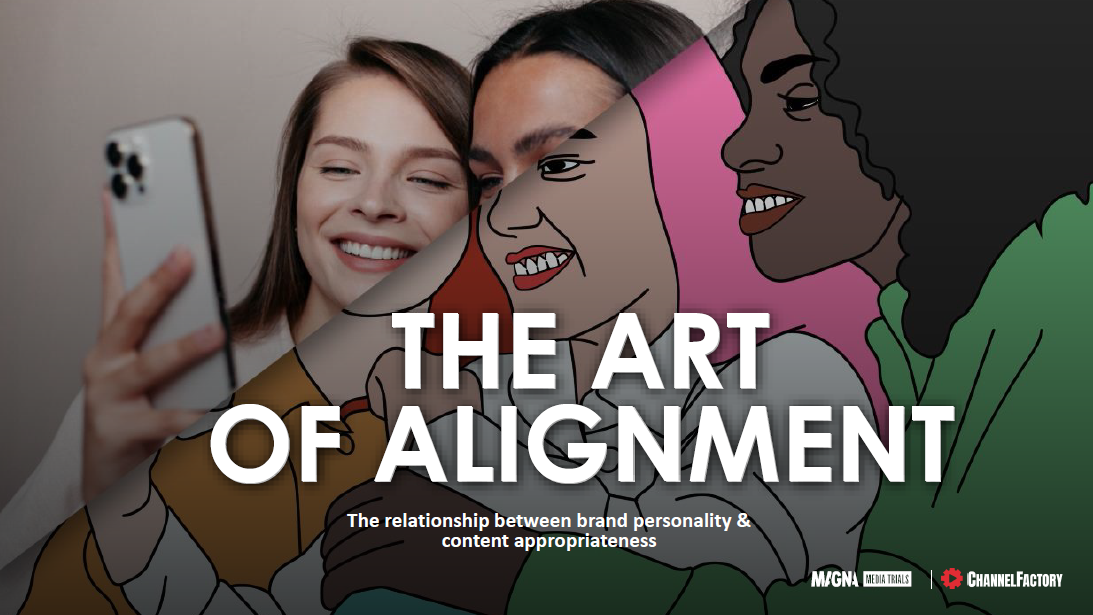Aligning With the Wrong Content Can Sink Video Ads: Magna Study
Brand impact diminished by being in an inappropriate atmosphere

Running a commercial next to the wrong video content can sink a brand, according to a new study by media buyer Magna working with Channel Factory.
The study, The Art of Alignment, which surveyed consumers in the United States, United Kingdom and Australia, found that when an advertisement appears in content that is questionable, its message can fail to stick with the consumer and its ability to persuade is diminished. And what is appropriate for one brand may not be appropriate for another.
The study goes beyond simply avoiding all categories of content, such as news, as a way to judge the proper environment for ads.
“Ad environments that fall into grey areas require careful judgment calls be made by brands and their agencies,” said Joshua Lowcock, global chief media officer at UM, which, like Magna, is part of IPG’s media operation. “There isn’t always a one-size-fits-all solution, as misaligned content for one brand could be a smart, underleveraged opportunity for another. Put differently, what’s right for one brand isn’t always right for another.”
Also: Magna Study Finds New Roku Ad Formats Draw Better Results
Consumers hold brands accountable for content, the study found. In the U.S., 41% of those surveyed agreed that the brand is supporting the content simply by being adjacent to it.
When the content falls in the gray area, in terms of appropriateness, there was only a 3% increase in message association, compared to a 12% increase in standard content, the study found. The lift in purchase intent dropped to 4% in gray content from 10% in standard content and the growth in search intent dropped to 6% from 11%.
Broadcasting & Cable Newsletter
The smarter way to stay on top of broadcasting and cable industry. Sign up below
The effect on brands varies from brand to brand and category to category. Among the most sensitive categories are toys and financial services. Less sensitive were beverages and quick-service brands.
Younger consumers are likely to be most affected by the appropriateness of content in which ads appear. Purchase intent dropped 8% for millennials and 6% for Gen Zers, compared to just 2% for Gen Xers.
Questionable content adjacent to ads with 45% of respondents disagreeing with the appropriateness of content in B-to-B ads for financial services brands, compared to 38% for business-to-consumer financial services brands.
“Similar to how brands have always made decisions about where to buy print ads or place their billboards, we believe brands buying media placements in online video should have the same rigor, and this study proves out how important alignment is,” Channel Factory senior VP marketing Lauren Douglass said. “Especially with younger audiences, consumers are sensitive to what content a brand is running alongside, as they believe the brand is proactively supporting that video. Advertisers who are thoughtful about the content they support will be more successful from a perception and purchase intent perspective.”
The study recruited 5,800 participants who were regular users of a popular social media video app. They were driven to a controlled mobile version of the app to watch content with randomly delivered ads. A post-exposure survey was used to measure the brand impact. ■
Jon has been business editor of Broadcasting+Cable since 2010. He focuses on revenue-generating activities, including advertising and distribution, as well as executive intrigue and merger and acquisition activity. Just about any story is fair game, if a dollar sign can make its way into the article. Before B+C, Jon covered the industry for TVWeek, Cable World, Electronic Media, Advertising Age and The New York Post. A native New Yorker, Jon is hiding in plain sight in the suburbs of Chicago.

